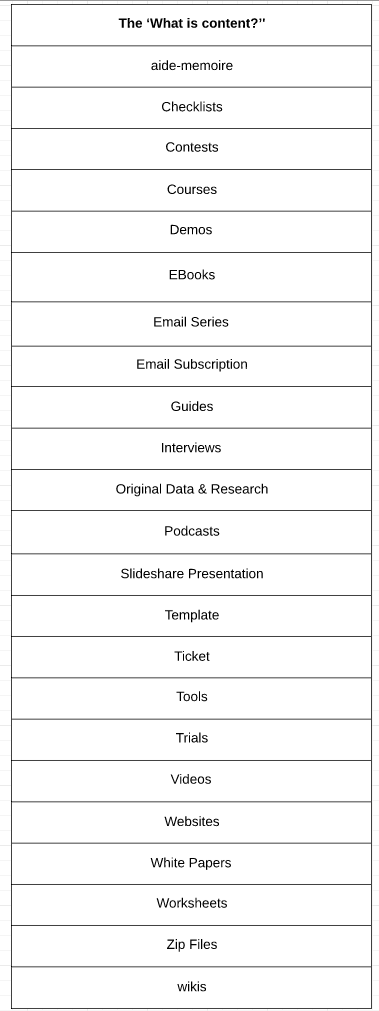A diversity of multimodal forms
The list to the right is unglamorous and inelegant. Yet, ironically, it represents for me the evidence of how much has changed in ‘authoring’ in a digital age.
In a literary sense, each document has its own linguistic and aesthetic properties, conventions and rules. Similarly, each form provides school leaders, staff and students within a school countless opportunities to apply new skills in using digital technologies.
Text, Speech and Graphics.
The key assumption is that the intersection of all three areas is required to effectively create education content online. We use the following ‘formula’.
| *Pedagogy & Learning Theories | + Digital Technologies | + Artistic & Aesthetic Elements |
= Digital Transformation Of Teaching & Learning
|
The term ‘design’ is often used in processes of ‘instructional design’ and ‘designer’. However, the predominance of the visual arts through ‘graphic design’ also calls on educators to devise and author educational content, or script and storyboard like animators and filmmakers. In many respects, creating educational content, for instance, for a blended learning course seems similar to the postmodern term used in the philosophy of film of the auteur, reflecting the all embracing vision, ethos and aesthetic of the film’s director.
However, like all aspects of education now, cognitive science is offering some interesting perspectives on human learning, renewing our understanding of play and the connections between ’embodied learning’ and brain development. For instance, dance research has been applied to the treatment of autism. In a more fundamental sense, performance researchers and theatre historians are now investigating at issues of cognition and audience engagement.

How big a change is taking place to education content on the web?
Paul Ruthven’s IBISWorld report for IBM Australia in 2012 quantified the degree of digital transformation of the Australian education sector. In the “first report in the world to rate a nation’s entire list of industry classes against the input of high speed broadband and technology” , the report gives an exhaustive indication of the extent of change of 509 classes of industry in the Australian economy over the next 40-50 years.
Tellingly, the eleven industry classes in education identified by Ruthven are predicted ripe for change: in fact, that digital technologies would transform the way that 90% of the education budget would be spent. For nine of the classes of business it declared a ‘transformational effect’ and for two a ‘significant effect’, with these two ratings described as follows:
- A transformational benefit rating is given in cases where broadband utility would virtually underpin the industry in terms of product, features and delivery, or indeed enable the industry to exist at all; and
- A significant benefit rating infers such possibilities as product embellishment, potential productivity gain or other advantage that could be reflected in faster growth, lower costs and/or higher profitability.
It’s hardly surprising to see, for instance, the crucial role which the Australian Institute for Teaching and School Leadership website plays in curating a comprehensive assembly of resources which include
- PowerPoint presentations and activities on Unpacking and implementing the Australian Professional Standards for Teachers;
- Hundreds of video examples that capture teaching practice aligned to the Standards as Illustrations of Practice;
- An online questionnaire in the form of a Self-Assessment Tool designed as a reflective and diagnostic tool for self-monitoring an individual teacher’s use of Standards;
- A smartphone app, My Standards App, which lets teachers collecting and annotating classroom artefacts to inform professional growth;
- Classroom Practice Continuum – A continuum within the Standards framework that shows teachers how the Professional Practice Domain can be viewed at increasing levels of proficiency; and the
- Teacher Toolkit where AITSL’s online tools and resources can be accessed by browsing categories or performing a search.
Look forward to reflecting on these issues with you.



